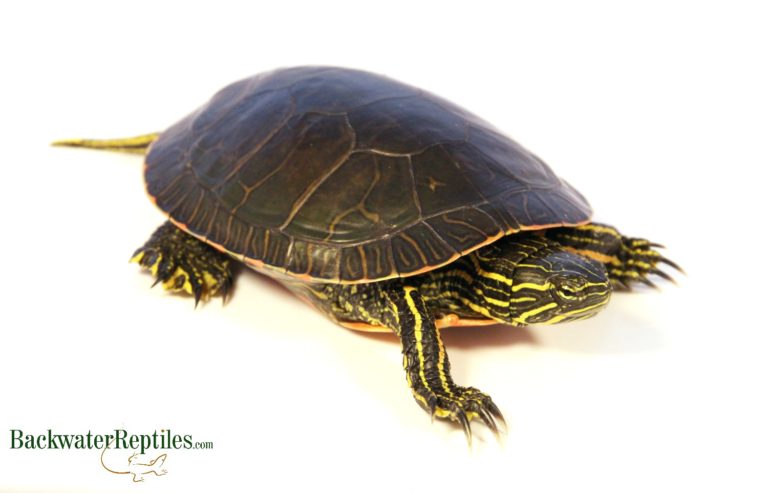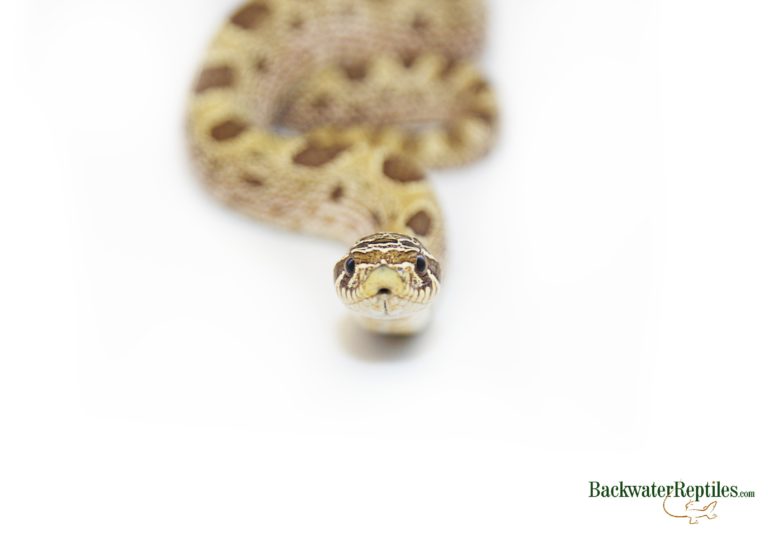Dealing with illness in your pet reptile
Unfortunately, sometimes part of owning a pet of any type, whether it’s a scaly companion or a furry friend, can be dealing with illness. Just like human beings, our pets can become sick or exhibit symptoms of the onset of an illness and it’s not always anyone’s fault.
Luckily for reptile owners, veterinary medicine is still evolving to accommodate more and more reptilian patients. This means that should your pet become seriously ill, a professional diagnosis and treatment are not too hard to come by.
While the Backwater Reptiles team has no veterinary training, we do handle reptiles on a daily basis and we have been working with them, handling them, feeding them, and yes, even treating their illnesses for many years. In fact, many of the Backwater Reptiles staff have been keeping pet reptiles since childhood.
In this article, we’ve combined the knowledge of our staff in order to address and discuss some of the most common reptile ailments that a reptile owner might encounter. Again, please bear in mind that any treatments or recommendations listed in this article are suggestions and should not take the place of the diagnosis and/or treatment from a licensed veterinarian or herpetologist.

What are the most common reptile illnesses and ailments in captivity?
Mouth Rot
Mouth rot is a very common ailment that is also known as oral inflammation and infectious stomatitis. This is a condition that you can clearly see and often times diagnose at home that affects snakes, lizards, turtles, and even tortoises.
Mouth rot occurs when a reptile’s immune system is unable to maintain the natural balance of bacteria that normally occur within its mouth. This can be caused by any number of factors but usually always involves a catalyst that stresses the reptile and its immune system to the point of being unable to function properly. Examples of such situations could be: improper temperature or humidity fluctuations or gradients within the animal’s enclosure, improper or poor diet, or oral injuries caused by snout rub against the cage walls or other surface, injury to the mouth by live prey, or even chewing on substrate/bedding.
The main symptom of mouth rot includes red, swollen, or otherwise irritated oral tissue. However, if left untreated, the inflamed mouth tissue can become black and necrotic or even start leaking pus. Another prominent symptom is a loss of appetite for obvious reasons.
Treatment for mouth rot varies, but if you catch it early, you can generally correct it without too much fuss. You can treat at home for minor symptoms by putting antibiotic ointments on the affected area and making necessary adjustments in your reptile’s enclosure that caused the infection in the first place.
For more severe cases, you will likely need to get a vet involved and have the mouth rinsed and treated with antiseptic liquid and further treated with ointment. Surgery might even be necessary in particularly bad cases.
Prognosis with mouth rot varies and is best viewed on a case by case basis.
Mites
It is known as acariasis when a reptile becomes infected with the external parasites known as mites. While there are numerous species of mite that your reptile might encounter, they are all tiny invertebrate parasites that suck blood.
The symptoms of mites not be all that obvious to you at first if the infestation is a small one. You’ll probably most certainly see the mites first thing though. They tend to look like little black or red specks that hang out around your pet’s eyes or scale crevices.
Mites in and of themselves aren’t too dangerous or threatening to your pet’s health if treated promptly. The main cause for concern should be where and how your reptile got the mites since it’s very easy for them to spread from species to species, particularly if you house all your reptiles in a shared space or room.

While poor husbandry can be the cause of a mite infestation, that is not always the case. Many animals that are imported (i.e. wild caught and not captive bred) are bound to have a few mites as this is a very common occurrence in the wild. The problem occurs when the mites migrate to other reptiles in your home or when the animal becomes confined to its captive enclosure and the mites have a smaller space to multiply. It is at this point that your reptile might develop second hand symptoms from the mites such as a compromised immune system or dehydration.
Mites can be treated first and foremost with isolation or quarantine. The first thing you will want to do as a responsible reptile owner is to separate the infected animal from any others you might have in your home.
Next you will want to clean the infected animal’s enclosure thoroughly by tossing out substrate, soaking/washing all cage accessories in a hot soapy water mixture, and wiping down the interior of the cage.
You will treat your animal with a veterinarian approved mite solution. While there are over the counter solutions sold in many pet stores, we highly recommend checking with your local vet to make sure that the treatment you are choosing is both safe and effective. Never use flea, mite, or tick sprays made for mammals without your vet’s express consent as these often contain ingredients that are more harmful to the reptile than to the mites.
Luckily, if treated accordingly, mites are a fairly common ailment that can be cured with some effort.
Metabolic Bone Disease
Metabolic bone disease is a serious issue in reptiles that is characterized by an improper balance of calcium, phosphorous, and vitamin D. It primarily affects reptiles that are insectivores and is typically not seen in snakes since most species eat rodents which provide complete and adequate nutrition.
Symptoms of metabolic bone disease, or MBD as it is commonly known amongst herp enthusiasts, include: limping, bowed limbs, hard lumps along the legs, spinal column, or jaw, softening and unusual flexibility of the lower jaw, difficulty raising the body off the ground, and a marked decrease in appetite. If calcium levels fall too low, extreme lethargy, tremors, and depression can result in death.
The most common cause of MBD is an imbalanced diet. We highly recommend that all reptile owners check to see what vitamins their pet requires in captivity and that insects are dusted accordingly.
MBD in turtles, tortoises, and some lizard species can also be caused by inadequate exposure to UVB rays. Many types of reptiles need UVB light in order to properly metabolize calcium, phosphorous, and vitamin D, so make sure that your UV light bulbs are changed at least every six months and that your pet has adequate time and space to bask in these rays daily. Many reptile owners will also take their pets outside to get natural UVB rays from the sun.
The good news is that if MBD is caught right away and treated immediately, it can usually be corrected. If the disease is allowed to progress too far without treatment however, sadly, often times the ailing animal is unable to pull through.

Obesity
Obesity is much the same monster in reptiles as it is in humans. Typically, it most commonly affects amphibians. However, there are certain reptile species with hefty appetites that are predisposed to obesity.
Species of reptile that are more commonly treated for obesity include: Blue Tongue Skinks, Bearded Dragons, certain species of monitor lizard, and Tegus.
As you might have guessed, the primary cause of obesity in reptiles is overfeeding. Many reptiles are so eager to eat that they don’t stop when their tummies are full. This obviously results in an overweight animal.
The treatment for obesity is fairly simple once the problem is recognized. Usually, all it takes is some portioned meals and maybe some exercise if you have a species of reptile that can be taken out of the cage for some activity.
Respiratory Infections
The main respiratory infection that is commonly seen in captivity is pneumonia. This disease and most other respiratory issues that a reptile could potentially battle are caused by a bacterial infection.
Depending in the illness or bacterial infection in question, your reptile could potentially exhibit any number of symptoms. The most common symptoms of respiratory infection are: difficulty breathing which can sometimes be hard to notice at first, keeping the mouth held open while breathing, unusual wheezes, crackles, or other sounds while breathing, and any kind of discharge from the mouth and/or nose that could appear clear, white, brown, or even green in color. Symptoms as the illness progresses might include lethargy, loss of appetite, and weight loss.
Although this is not always the case, typically respiratory infections in reptiles are caused by unsanitary conditions in the reptile’s environment. Occasionally, they can be caused by an environment that is too moist and does not maintain proper temperature gradients.
Because the exact cause of respiratory infections can be difficult to diagnose, we do recommend seeking professional veterinary help should you notice that your pet reptile is exhibiting unusual symptoms and/or having difficulty breathing. Your vet will be able to properly diagnose your pet’s illness and issue antibiotic treatment accordingly.

Conclusion
While we sincerely hope that you never have to deal with a sick pet reptile, it can happen. Our goal with this post is to help identify and perhaps trouble shoot potential issues you might encounter.
Please keep in mind that while Backwater Reptiles has helped rehabilitate sick animals that have been brought to us as rescues, we do not always recommend home treatment. Veterinary care is always the safest option when you notice any symptoms of illness in your pet.
